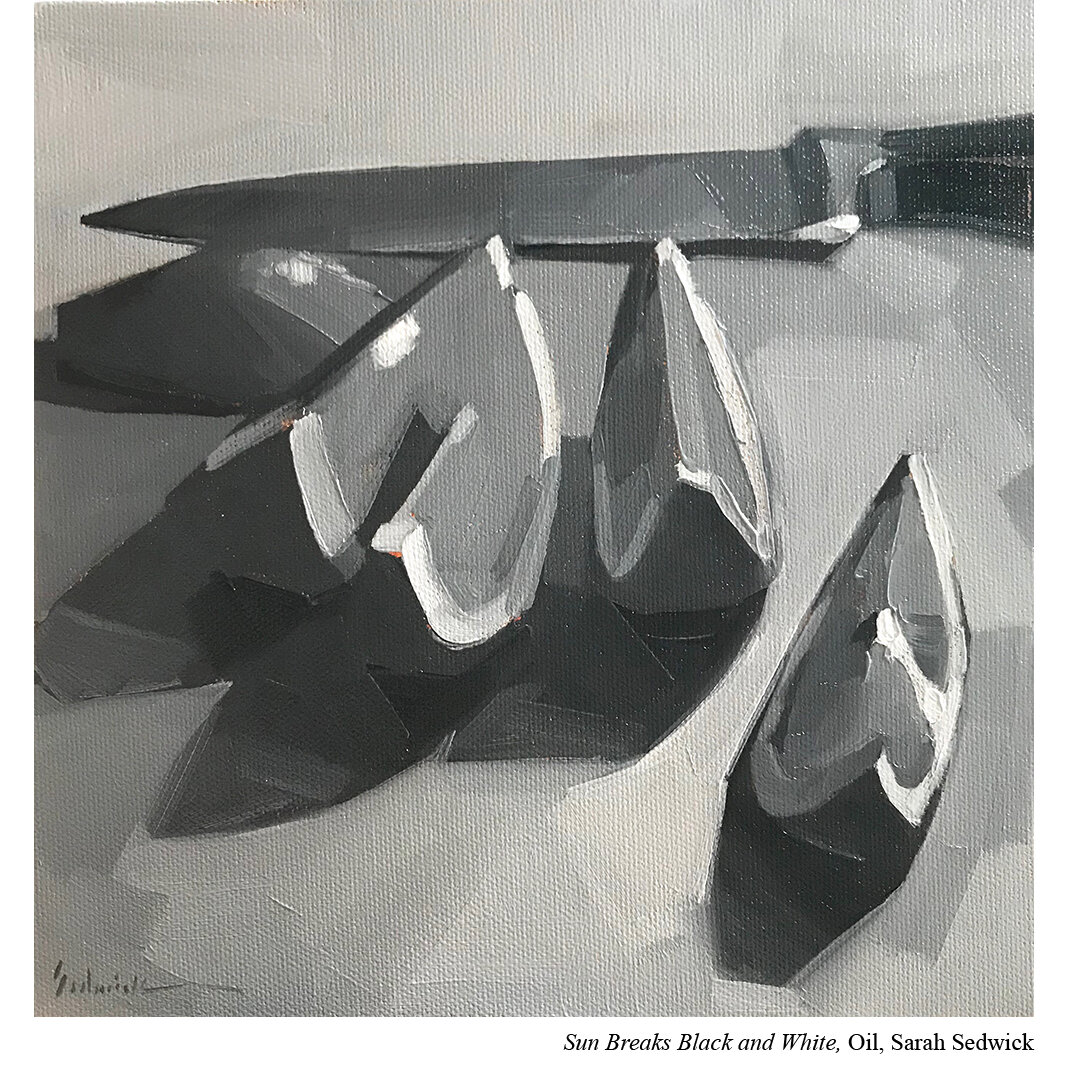How to Paint Shadows in Oil
When oil painter and teacher Sarah Sedwick (Ep. 22) is standing next to a student in painting trouble, the challenge often is in a single category.
"Shadows really throw people for a loop," says Sedwick.
Part of the challenge is that all shadows are just grey to some extent.
"But,” says Sedwick, “if you're calling it gray, that's not a helpful word. It's not helping you mix it."
SEEING AND MIXING
As a painter, your shadow painting challenge is two fold: (1) you must be able to define what you see and then (2) you must be able to mix it with the pigments you have on hand.
For the first part, the seeing part, Sedwick recommends artists ask themselves what kind of grey or neutral they are seeing.
Is it brownish grey? Greenish grey? Purplish grey?
Look around at the objects in your painting to find clues. What's the color of the object casting the shadow? What's the color of the thing the shadow is being cast on?
"Those are other good places to start diagnosing," says Sedwick.
One you can define what kind of grey is in your shadow, you have a starting point to mix your neutral.
"If it looks like you have a purpley gray, take purple, neutralize it with the complement yellow, start there."
Then you can add additional colors to warm or cool as necessary.
VALUE POWER
If you’re struggling with mixing shadows correctly, there’s good news.
"The really good news...is that it doesn't matter what color you paint it and long as you match the value relationships that you're observing before you in your subject."
Sedwick suggests squinting to try to get yourself in the right value.
And if you get your value right, you can be a little off on your color mixing and it will still absolutely read as a successful shadow in your painting.
Get articles like this and new podcast episodes sent straight to your inbox by signing up for the newsletter below.


